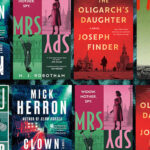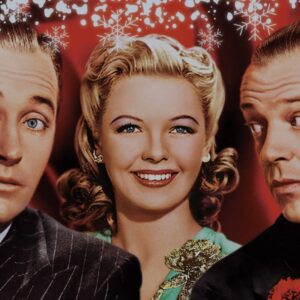
What a Plunge! Teaching Mrs. Dalloway to High Schoolers in 2025
Mia Manzulli Considers Clarissa in the Age of AI and Fractured Attention
We started reading Mrs. Dalloway on a day not unlike the one that prompts Clarissa to think, “What a lark! What a plunge!” The air, lightly scented with spring flowers, refreshed the classroom where 25 students opened the final book they would read together in high school. Teaching Mrs. Dalloway to second-semester seniors, weeks away from graduation, posed a number of challenges, but there we were, 100 years after Woolf published her novel, ready to take the plunge.
What would they make of this foray into a single day in June, 1923?
First impressions, gleaned from students’ writing reflections, were predictable: “These run-on sentences are hard to keep track of”; “I thought we were in a flashback, when did we get back to the present?” “Why does the perspective keep changing?” “Unfortunately I have already gotten lost within the pages; many characters have been introduced and I am already mixing them up. Also the sentences are very long so I’m starting to lose track of where I am.” “I think the book is good so far, but a little hard for me to completely understand what’s going on. However, the really vivid descriptions and imagery are helping me through it.”
Some students, without realizing it, were already tapping into what made the novel special:“I feel like not a lot has happened so far but because there are so many literary devices and figurative language to describe the scenes, it feels like a lot has happened.” “When I was reading this book, I felt that this type of narrative is so new to me. The unstoppable march of time hooked me the most. I learn lots of information as Clarissa walks around, and how she observes people around her so well.”
What shook me out of my own predictable responses was the student who shared: “I find it interesting how much the word ‘invisible’ is said, especially when talking about Clarissa. She seems to glide through life, observing and ordinary: ‘Not that she thought herself clever, or much out of the ordinary.’ I feel like the arc of her story will be that she will not sit back and observe; she will eventually take charge and make herself known.” I hadn’t thought much about Clarissa’s “invisibility” before.
But isn’t that what happens to women as we get older? We become less visible. Clarissa senses “herself invisible; unseen; unknown; there being no more marrying, no more having children now… this being Mrs. Dalloway; not even Clarissa any more; this being Mrs. Richard Dalloway.” While opting to keep one’s maiden name–not typically an option in 1925– may prevent some degree of loss, marriage and children do define some women. As Peter observes of Sally, “Lord, lord, what a change had come over her! The softness of motherhood; its egotism too,” reminding us that while the male gaze may persist, its focus has clearly changed.
Closer in age to the grown Clarissa than ever before, I found myself thinking about how different my current reading experience is from that of my 18-year-old students. Less preoccupied with making sense of Woolf’s novel than the seniors were, I wanted to linger with the words and appreciate the craft, the brilliant intersections of past and present. The passage of time, the way that Peter and Clarissa recall their shared history, the recognition that one’s child has a life of her own–these moments called out to me in ways they never had in earlier reads.
“Why is Clarissa thinking so much about her past lovers when she has a husband?” is a question only a much younger (and likely never married) reader would ask. Without the benefit of age, perspective, and Woolf’s belief that “The past only comes back when the present runs so smoothly that it is like the sliding surface of a deep river,” my student could only wonder at Clarissa’s apparent equivocation. Along these lines, there is a teenager’s fascination with Peter, sexual identity, young love, and regret. A moment that stood out to one student was “How Peter is old now but still can vividly think about 18 years old Clarissa” and for another, “I really connected with the way Mrs. Dalloway was comparing herself to others at the start of the book.”
*
The attention required to read Mrs. Dalloway in 2025 is at odds with the typical reading experience in high school these days. And yet, a focus on the small moments elicited observations about “the moments when the characters talk about love. While both the main men describe their love for Clarissa, Clarissa only describes her love for another woman.” “I like the yearning of Peter for Clarissa, and Sally and Clarissa’s love story” one student observed. Another recalled “Clarissa and her husband’s dynamic, Ms. Kilman’s hatred and ‘pity’ for Clarissa, Richard being invited to the lunch but not Clarissa, Sally Seton being introduced, Peter crying when he saw Clarissa.”
We coexist with our past selves, embodying and embracing some elements, while moving on and away from others.
In a day and age where SparkNotes, LitCharts, and ChatGPT can provide summaries and analysis in an instant, the decision to read–really, truly read–distinguishes certain students. Their commitment to deciphering a text and coming to terms with it on their own feels almost momentous, as are their genuine reactions to what unfolds in Woolf’s novel. When one student made sure to tell me that she had connected over Mrs. Dalloway with a potential future roommate at college next year, I felt more hopeful about the future of reading than I have in a long time. (The potential roommate had just finished reading the novel for her senior English seminar and had cried at the end, prompting my student to share that she was also reading this novel and now she can’t wait to read the end and find out what happens.)
Not surprisingly, my students had an acute interest in Woolf’s depiction of mental health and an appreciation for her attention to Septimus. When asked if reading Mrs. Dalloway today still matters, many of my students pointed to the Septimus narrative: “Mrs. Dalloway is still relevant today because there are still people with PTSD who suffer like Septimus did”; “I think that it still very much relates to current issues of mental health and also the effects of constantly objectifying/constantly being hyper focused on the effects something has on you.”
Another student perceptively offered, “I like to read about Rezia’s parts in the novel. I think her perspective is equally as important as Septimus, especially on the outcomes of war and the toll that comes with PTSD.” As teenagers in 2025, they are far more adept at discussing mental health conditions than earlier generations of students, often seeing aspects of themselves in Woolf’s characters. When she writes in Moments of Being, “I am someone who thinks and feels much more than is reasonable. And that is all,” Woolf speaks directly to the teenage experience.
*
I don’t clearly remember my first time reading Mrs. Dalloway. I do remember a total immersion in her writing, the engagement with moments and stream of consciousness, the threads of connection between the novels and the essays. I pulled my well-preserved copy of Mrs. Dalloway from my bookshelf and brought it to class on the day we started reading it. Some of my annotations were unsurprising: Peter and his pocket knife, that quotation about invisibility, Clarissa’s kiss with Sally.
But what was I thinking when I underlined Peter’s observations that the “compensation of growing old…was simply this; that the passions remain as strong as ever, but one has gained—at last!—the power which adds the supreme flavour to existence,—the power of taking hold of experience, of turning it round, slowly, in the light”? Revealing my own curiosity about aging and what the future had in store, these annotations were not unlike those of my students. Perhaps we had more in common than I thought.
High school seniors are already worrying about what comes next and what they don’t want to regret when they, like Clarissa and Peter, find themselves looking back while looking ahead. What resonates particularly is young Clarissa’s insecurity and uncertainty, that she is “curious but also set in her ways about what is expected of her. She is interested in life, but only sees small parts of what’s possible.” There are also “the social expectations and pressures that are put on a woman” and “having to choose between doing what is expected, easy, and conventional, or doing what she actually wants to.” There was also a fear that “Heartbreaks might not be healed even though you are old and time has passed.”
That one is thought of as “old” when only in his or her 50s is something I still have to come to terms with. While I do not see myself reflected in Clarissa, perhaps I do in Sally Seton who, as Lady Rossiter is described as “fifty-five, in body, but her heart was like a girl’s of twenty.” And maybe that is part of the point. We coexist with our past selves, embodying and embracing some elements, while moving on and away from others. Sally “felt more deeply, more passionately, every year,” a feeling that an 18-year-old can’t yet grasp.
If reading Mrs. Dalloway 100 years later teaches us anything, it is that people can surprise us. I certainly did not expect my students to become invested in the fates of Clarissa, Peter, or Septimus in their final weeks of high school. In retrospect, of course, it makes sense. They, too, are poised on a precipice, about to leave everything that feels safe and predictable, wondering how they will navigate the plunge that awaits.
Mia Manzulli
Mia Manzulli is a writer and educator based in Seattle. She has a PhD in British and American Literature from NYU, for which she wrote her dissertation, Writing, Sexuality, and the Garden: The Project of Edith Wharton. Her work can be found in The Edith Wharton Review, The Connecticut Review, and A Forward Glance: New Essays on Edith Wharton.



















